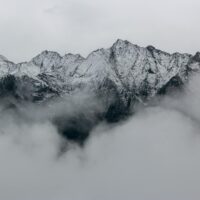Transformer Models Comparison FeatureBERTGPTBARTDeepSeekFull TransformerUses Encoder?✅ Yes❌ No✅ Yes❌ No✅ YesUses Decoder?❌ No✅ Yes✅ Yes✅ Yes✅ YesTraining ObjectiveMasked Language Modeling (MLM)Autoregressive (Predict Next Word)Denoising AutoencodingMixture-of-Experts (MoE) with Multi-head Latent Attention (MLA)Sequence-to-Sequence (Seq2Seq)Bidirectional?✅ Yes❌ No✅ Yes (Encoder)❌ NoCan be bothApplicationNLP tasks (classification, Q&A, search)Text generation (chatbots, summarization)Text generation and comprehension (summarization, translation)Advanced reasoning tasks (mathematics, coding)Machine translation, speech-to-text Understanding ChatGPT and BERT: A Comprehensive Analysis by Zhong et al. (2023). The advancements in natural language processing (NLP) have been greatly influenced by transformer-based models like ChatGPT and BERT. Although both are built on the transformer architecture, they serve different purposes and exhibit unique strengths. This blog post explores the mathematical foundations, architectural differences, and performance capabilities of these two models, integrating insights from the recent comparative study by Zhong et al. (2023). The Transformer Architecture Click here to view the Transformer Architecture on Jalammar’s website (Illustrated Transformer) At the core of both ChatGPT and BERT is the transformer architecture, which revolutionized how models process sequential data. The transformer uses self-attention to assign importance to different words in a sentence, allowing it to capture long-range dependencies more effectively than earlier methods like RNNs and LSTMs. Key Components of the Transformer: Multi-Head Attention: Allows the model to focus on different parts of the sentence simultaneously. Positional Encoding: Adds positional information since transformers process input non-sequentially. Feedforward Neural Network: After self-attention, a fully connected layer processes the attended information. Architectural Differences: BERT vs. ChatGPT Both ChatGPT and BERT are based on the transformer architecture, but they differ in how they process information and what tasks they excel in. BERT is primarily designed for understanding, while ChatGPT is better at generating coherent and contextually relevant text. You May Wanna Ask Now : Transformer Is Made Of Both Decoder & Encoder While ChatGPT Is Decoder Only So Why We Still Say ChatGPT Is Made Of Transformers ? The term “Transformer” refers to a specific neural network architecture introduced in the 2017 paper “Attention Is All You Need” by Vaswani et al. This architecture comprises both an encoder and a decoder. However, subsequent adaptations have led to models utilizing only one of these components, tailored to specific tasks. ChatGPT’s Architecture: ChatGPT is based on the GPT (Generative Pre-trained Transformer) series developed by OpenAI. These models employ a decoder-only architecture. In this setup, the model generates text by predicting the next token in a sequence, relying solely on the decoder mechanism. This approach is particularly effective for tasks like text generation, where the model needs to produce coherent and contextually relevant continuations of input text. medium.com Why Still Call It a Transformer? Even though ChatGPT uses only the decoder part, it retains the core principles of the Transformer architecture, such as self-attention mechanisms and feed-forward neural networks. The term “Transformer” has thus evolved to encompass models that utilize these foundational components, regardless of whether they implement both encoder and decoder. Consequently, models like GPT are referred to as Transformer-based due to their adherence to these underlying principles. en.wikipedia.org Adaptations in Transformer Models: The flexibility of the Transformer architecture has led to various adaptations: Encoder-Only Models: Such as BERT, which are optimized for understanding and processing input data, excelling in tasks like text classification and sentiment analysis. Decoder-Only Models: Like GPT, designed for generating text by predicting subsequent tokens, making them suitable for tasks like text completion and dialogue generation. Encoder-Decoder Models: Like T5, which utilize both components for tasks that involve transforming input text into a different output, such as translation or summarization. In summary, while the original Transformer architecture includes both an encoder and a decoder, the term “Transformer” has broadened to describe models that implement its key components. ChatGPT, employing a decoder-only architecture, is still considered a Transformer-based model due to its foundational reliance on these principles. BERT (Bidirectional Encoder Representations from Transformers Click here to view BERT Architecture on Jalammar’s website (Illustrated BERT) Architecture: BERT uses an encoder-only structure. It processes input text in both directions (bidirectional) to understand the context of a word based on both its preceding and following words. Training Objective: BERT is trained using two tasks: Masked Language Modeling (MLM), where some words are hidden and the model learns to predict them, and Next Sentence Prediction (NSP), where the model learns the relationship between sentence pairs. ### Figure 1: Overview of BERT vs. ChatGPT Architectures FeatureBERTChatGPTArchitectureEncoder-only, bidirectionalDecoder-only, unidirectionalTraining ObjectiveMasked Language Modeling, Next Sentence PredictionPredict the next word in a sequenceTask StrengthsLanguage understanding (NLP tasks)Language generation (text-based tasks)Fine-Tuning CapabilityEasily fine-tuned for various NLP tasksLimited fine-tuning, excels in text generation ChatGPT Click here to view ChatGPT Architecture and details on OpenAI’s official website Architecture: ChatGPT is a decoder-only transformer model that processes text in a unidirectional (left-to-right) manner. This makes it ideal for generating text in conversation-like settings. Training Objective: It is trained using unsupervised learning, where the model predicts the next word in a sequence. This allows it to generate human-like, coherent responses. ### Table 1: Comparison of Results in the GLUE Benchmark (from Zhong et al., 2023) TaskFine-tuned BERTChatGPTPerformance DifferenceInference Task87.5%92.3%ChatGPT excelsParaphrase Detection85.0%77.2%BERT performs betterSentiment Analysis89.8%</90.1%Similar performance ###…
Can ChatGPT Truly Understand What We’re Saying? A Powerful Comparison with BERT” – Day 69



